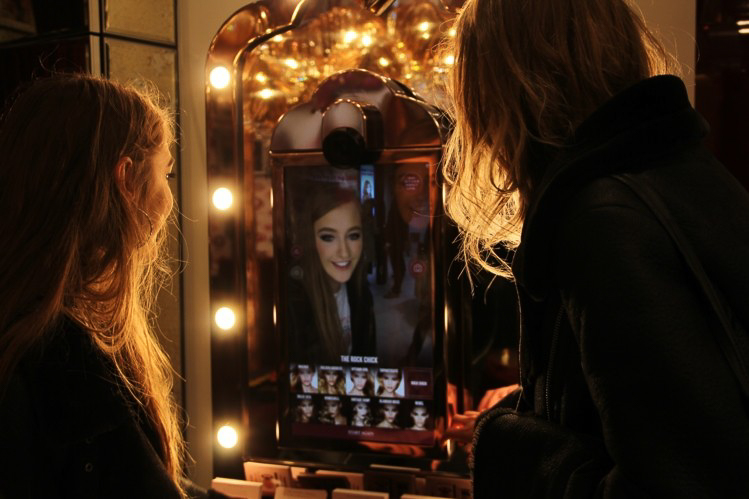When it comes to tech, it shouldn’t be try-hard. Brands with big budgets like to peacock with the latest gimmicks and gadgets but people won’t engage with it unless it genuinely enhances the experience. Above all, in-store tech should make sense and appear seamless. Here are a few brands who we think have nailed it:
1. Reformation and changing room tech

One way for a brand to use tech is to solve a problem. For Reformation, it was bad changing room experiences. They incorporated clever tech features to their San Francisco store, turning it into a showroom ripe for some serious fashion play. Customers can add items to the dressing room via an iPad, which then magically appear. You can choose your own music (chill or confident) and adjust the light to ensure the outfit will work in the harshest glares. Most importantly, staff members are on-hand throughout the entire experience, meaning the human touch isn’t lost to naff robotics. Fashion brands doing something similar include Rebecca Minkoff in New York, which installed digital mirrors, whilst Timberland launched a virtual fitting room with Kinect technology. Bloomingdales and Selfridges have also revealed in-store body scanners to help clients find their exact sizing. We’re excited to see who’s next in line.
2. Charlotte Tilbury and AR mirrors

Aimed at those who are afraid to step out of their cosmetic comfort zone, Charlotte Tilbury offered a solution through tech-enabled mirrors. In London, virtual mirrors helped shoppers decide which makeover to go for by playing around with different options. It was a genius move for those who didn’t want to waste time layering on different shades. Through augmented reality technology, customers could compare 10 looks side-by-side that would transform their reflection through virtual layering and blending. Our favourite feature was the button that switched day makeup to night, which showed the versatility of the products, from lipstick to mascara. The AR mirrors simply help to cement the decision to make a purchase, without the hassle of having to actually plaster any of it on.
3. Adidas and 3D knitters

In Berlin, Adidas launched a ‘Knit For You’ pop-up that used a body scanner and 3D-knitting machine to make bespoke sweaters swiftly. The shoppers were invited to enter a room where lasers were used to determine their size. Then they flick between patterns by using hand gestures and finally peruse colour options before coming to a final decision. The whole process was flawless and only took around four hours per item. Rumour has it, Adidas will soon step it up with 3D printers that can create trainers on the spot. Meanwhile, Ministry of Supply has taken it to the next level by permanently installing a 3D printer knit machine in its Boston flagship store. Risky, but perhaps they’re paving the way for a new type of fast fashion.
4. Amazon and checkout-free grocery stores

This year, Amazon Go offered an entirely new shopping experience where tech met trust. First, customers had to download the app (great for data collection) then sensors would monitor what shoppers took or put back. As soon as they leave the shop, they were billed automatically for the virtual cart from the credit card on file. Apparently, there were teething problems, such as children pulling items off shelves. There’s still a way to go, but if anyone is going to successfully pioneer this new type of machine retail, it’s Amazon. There’s huge potential to completely change the way we shop and condense the whole experience into a simple, efficient process with little effort from the customer.
5. Jaguar and personalised virtual experience

As a leading luxury brand, Jaguar had a lot to live up to when trying their hand at in-store tech, but they didn’t disappoint. Using sensory-based technology, the brand gave customers the chance to see what it would be like to customise their own car from the inside out. Through a 360-degree view, their virtual experience meant every detail could be bespoke to the customer. Real-time changes included the make, model and colour. This is just the beginning - bigger scales are on the horizon as similar tech is being tested by aircraft and ship carriers, too.